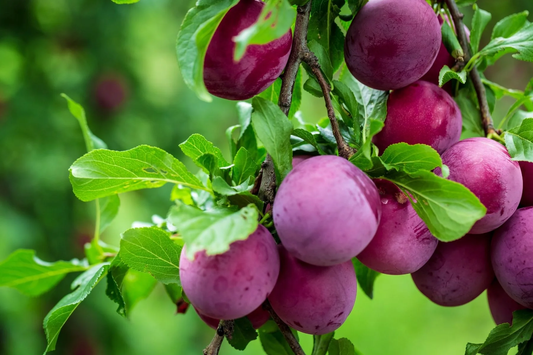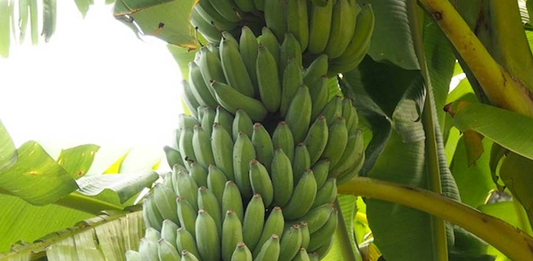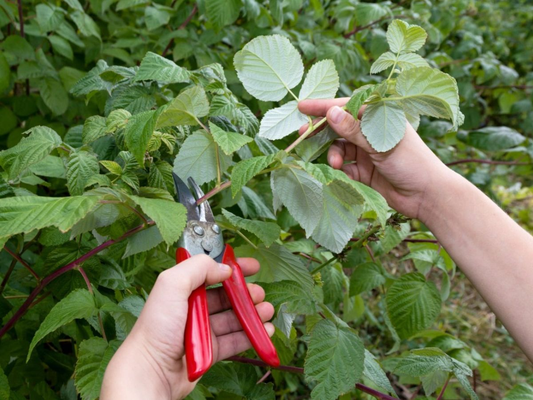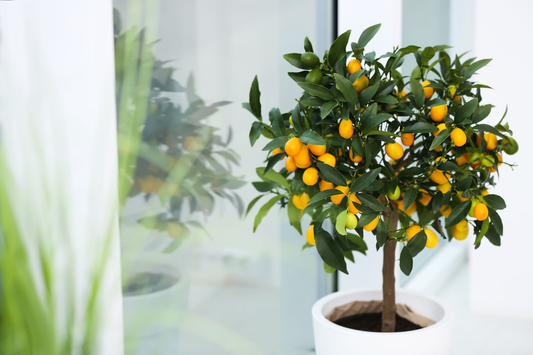How to Grow a Herb Garden Indoors
Share
- 1. Introduction
- 2. Choosing the Right Herbs for Indoor Gardening
- 3. Selecting the Perfect Location
- 4. Choosing Containers and Soil
- 5. Planting and Propagation Techniques
- 6. Watering and Feeding Your Herbs
- 7. Maintaining and Pruning Your Indoor Herbs
- 8. Managing Pests and Diseases
- 9. Harvesting and Using Your Herbs
- 10. Frequently Asked Questions (FAQ)
1. Introduction
An indoor herb garden is a fantastic way to bring nature into your home, cultivate fresh ingredients for your meals, and enjoy the therapeutic benefits of gardening. With limited outdoor space or unpredictable weather, indoor herb gardens are becoming an increasingly popular choice for both novice and experienced gardeners. In this section, we’ll explore what an indoor herb garden is, why indoor gardening is gaining popularity, and the numerous benefits it offers.
What is an Indoor Herb Garden?
An indoor herb garden is the practice of growing fresh herbs within the comfort of your home. Unlike outdoor gardening, this method uses containers, pots, or specialized indoor planters to nurture herbs in controlled environments. It is perfect for urban dwellers or anyone who wants to enjoy gardening without needing a backyard.
- Definition: A gardening method where herbs are grown indoors using minimal space, often on windowsills, countertops, or dedicated shelving units.
- Purpose: To provide fresh herbs for culinary use, medicinal purposes, or simply as decorative plants.
Why is Indoor Gardening Gaining Popularity?
The appeal of indoor herb gardening has soared in recent years due to its versatility and accessibility. Here are some reasons behind its growing popularity:
- Urban Living Constraints: With limited outdoor spaces in cities, indoor herb gardening offers a convenient alternative.
- Climate Control: Growing herbs indoors eliminates the challenges posed by weather extremes or seasonal changes.
- Easy Maintenance: Herbs are typically low-maintenance, making them ideal for busy lifestyles.
- Wellness Benefits: Gardening indoors has been linked to improved mental health and reduced stress levels.
Benefits of Growing Herbs Indoors
Growing an herb garden indoors provides a host of benefits that extend beyond access to fresh herbs. Here are the top advantages:
-
Year-Round Freshness:
- Enjoy fresh herbs regardless of the season.
- Harvest herbs like basil, thyme, and mint whenever needed for cooking.
-
Space-Saving Gardening:
- Perfect for apartments or homes without outdoor space.
- Maximizes small areas using creative setups like vertical planters or wall-mounted pots.
-
Improves Indoor Environment:
- Adds greenery and a natural touch to your home decor.
- Improves indoor air quality by releasing oxygen and absorbing carbon dioxide.
-
Cost-Effective:
- Reduces the need to purchase store-bought herbs.
- Allows you to grow organic herbs, saving money in the long run.
In summary, an indoor herb garden is more than just a practical gardening solution; it’s a rewarding hobby that enhances your lifestyle and brings a touch of nature into your home.

2. Choosing the Right Herbs for Indoor Gardening
When growing herbs indoors, selecting the right varieties is crucial for success. Certain herbs thrive better in indoor environments, while others may struggle without proper conditions. In this section, we’ll cover key factors to consider, the best herbs for indoor gardening, and beginner-friendly options to get you started.
2.1 Factors to Consider
Before choosing which herbs to grow indoors, take these factors into account:
-
Light Availability:
- Most herbs require at least 6–8 hours of bright, indirect sunlight daily.
- South-facing windows are ideal, but grow lights can supplement low-light areas.
-
Temperature and Humidity Preferences:
- Herbs like basil and cilantro thrive in temperatures of 65–75°F (18–24°C).
- Maintain moderate humidity levels; avoid placing herbs near drafty windows or heat sources.
-
Growth Habits and Space Requirements:
- Compact herbs like chives and parsley are perfect for small spaces.
- Climbing herbs (e.g., rosemary) may require vertical support or pruning.
2.2 Best Herbs for Indoor Growing
Not all herbs are suitable for indoor gardening, but the following are some of the best options:
| Category | Examples |
|---|---|
| Culinary Herbs | Basil, thyme, oregano, parsley, cilantro, chives, mint |
| Medicinal Herbs | Aloe vera, chamomile, peppermint, lavender |
| Aromatic Herbs | Lemon balm, rosemary |
2.3 Beginner-Friendly Herbs
If you’re new to indoor gardening, start with these low-maintenance herbs:
-
Mint:
- Thrives in partial light and tolerates occasional neglect.
- Grows rapidly, making it a great choice for beginners.
-
Chives:
- Compact and ideal for small spaces.
- Easy to harvest and grows well in indirect light.
-
Basil:
- Prefers warm temperatures and bright light.
- Produces abundant leaves with minimal effort.
3. Selecting the Perfect Location
The location of your indoor herb garden plays a vital role in the health and growth of your plants. Whether relying on natural light or artificial lighting, understanding the specific needs of your herbs ensures they thrive. Additionally, maintaining the right temperature and humidity creates an ideal environment for indoor gardening success.
3.1 Importance of Natural Light
Natural sunlight is one of the most critical factors for growing healthy herbs indoors. Here's what to consider:
-
Best Places in Your Home for Natural Sunlight:
- South-facing windows provide the most consistent and intense sunlight throughout the day.
- East-facing windows are ideal for herbs that enjoy morning sun but can tolerate partial shade in the afternoon.
-
Light Needs for Different Herbs:
- High-Light Herbs: Basil, rosemary, thyme, and oregano require 6–8 hours of direct sunlight.
- Partial-Shade Herbs: Mint, parsley, and chives can thrive with 4–6 hours of indirect light.
3.2 Using Artificial Lighting
If your home doesn’t have sufficient natural light, artificial lighting is a great alternative. Here's how to choose and use grow lights effectively:
-
Types of Grow Lights:
- LED Lights: Energy-efficient and long-lasting, with full-spectrum options to mimic natural sunlight.
- Fluorescent Lights: Affordable and effective for small spaces, but less durable than LEDs.
- Full-Spectrum Lights: Provide balanced wavelengths for optimal plant growth.
-
Setting Up Grow Lights:
- Place lights 6–12 inches above the herbs for uniform coverage.
- Set a timer for 12–16 hours of light per day, mimicking natural daylight cycles.
- Adjust the height of the lights as your herbs grow to prevent burning the leaves.
3.3 Temperature and Humidity Requirements
Creating the right indoor climate is just as important as light. Most herbs have specific temperature and humidity preferences:
-
Ideal Temperature Range:
- Most herbs grow best in temperatures between 65–75°F (18–24°C).
- Avoid placing herbs near cold drafts or heating vents to prevent temperature stress.
-
Managing Humidity Indoors:
- Place a shallow tray filled with water and pebbles near your herbs to increase humidity.
- Use a humidifier during dry winter months to maintain a consistent moisture level.
- Group plants together to create a microclimate with higher humidity.

4. Choosing Containers and Soil
The right containers and soil are essential for the success of your indoor herb garden. Choosing appropriate materials and ensuring proper drainage will keep your herbs healthy, while using the right soil mix provides the nutrients and structure they need. Additionally, mulching or decorative stones can add both functional and aesthetic value to your garden.
4.1 Types of Containers
Your choice of container impacts your herbs' growth. Here are the best options to consider:
-
Popular Container Types:
- Clay Pots: Porous material allows for airflow to roots but may dry out quickly.
- Ceramic Pots: Durable and attractive, but often heavier and may lack drainage holes.
- Self-Watering Containers: Ideal for beginners as they maintain consistent soil moisture levels.
- Recycled Containers: Creative and eco-friendly options like mason jars or tin cans, provided you drill drainage holes.
-
Importance of Drainage Holes:
- Essential to prevent waterlogging, which can lead to root rot.
- Add a layer of small stones or gravel at the bottom if your container lacks proper drainage.
4.2 Best Soil Mix for Herbs
Herbs require a soil mix that supports their growth indoors. Here’s what to look for:
-
Characteristics of an Ideal Potting Mix:
- Lightweight and well-draining to prevent water retention.
- Nutrient-rich, with added compost or organic matter to feed your herbs.
-
Avoiding Garden Soil:
- Garden soil is too heavy for containers and may compact, suffocating herb roots.
- It often harbors pests and pathogens unsuitable for indoor environments.
4.3 Adding Mulch or Decorative Stones
Enhancing your herb garden with mulch or decorative stones has both practical and aesthetic benefits:
-
Benefits of Mulching:
- Helps retain soil moisture, reducing the need for frequent watering.
- Suppresses weed growth, keeping your herbs healthy.
-
Using Decorative Stones:
- Provides an attractive finish to your containers.
- Helps maintain soil temperature and prevent splashing during watering.
5. Planting and Propagation Techniques
Understanding the best planting and propagation techniques is essential for starting or expanding your indoor herb garden. Whether you’re beginning with seeds, seedlings, or propagating from existing plants, each method has its benefits and requires specific steps to ensure success.
5.1 Starting from Seeds vs. Buying Seedlings
When starting your herb garden, you can either grow herbs from seeds or purchase ready-to-grow seedlings. Here's a comparison of both approaches:
| Option | Pros | Cons |
|---|---|---|
| Seeds |
|
|
| Seedlings |
|
|
5.2 Step-by-Step Planting Guide
Follow these steps for planting your herbs, whether starting with seeds or seedlings:
-
Prepare Your Pots and Soil:
- Choose a container with drainage holes and fill it with a well-draining potting mix.
- Moisten the soil slightly before planting.
-
Sow Seeds or Plant Seedlings:
- For Seeds: Plant seeds according to their depth requirement (usually 1/4 inch deep).
- For Seedlings: Gently remove the plant from its nursery pot and place it in the prepared soil, ensuring the roots are covered.
-
Watering and Initial Care:
- Water immediately after planting to settle the soil around the roots.
- Keep the soil moist but not soggy during the first few weeks.
- Place the pots in a location with appropriate light for the herb variety.
5.3 Propagation Methods
Propagation allows you to multiply your herbs from existing plants, making it an economical and rewarding method:
-
Growing Herbs from Cuttings:
- Choose herbs like mint, basil, or rosemary for propagation by cuttings.
- Cut a 4–6 inch section of a healthy stem just below a node.
- Place the cutting in a glass of water or directly into moist soil. Roots should develop within 2–3 weeks.
-
Division of Roots:
- Ideal for herbs like chives, which grow in clumps.
- Carefully dig up the plant and separate the root ball into smaller sections.
- Replant each division in its container, ensuring adequate space for growth.

6. Watering and Feeding Your Herbs
Proper watering and feeding are critical to keeping your indoor herb garden healthy and productive. Striking the right balance ensures your herbs thrive without the risks of overwatering or under-fertilizing. This section outlines the best practices for watering, feeding, and avoiding common mistakes.
6.1 Watering Basics
Indoor herbs require consistent but careful watering to stay healthy. Here are the essentials:
-
How Often to Water:
- Water most herbs when the top inch of soil feels dry to the touch.
- Frequency may vary based on the type of herb, container size, and indoor humidity levels.
-
Signs of Overwatering or Underwatering:
-
Overwatering Symptoms:
- Yellowing leaves.
- Wilting despite moist soil.
- Foul smell from roots (root rot).
-
Underwatering Symptoms:
- Dry, crispy leaves.
- Stunted growth or drooping plants.
-
Overwatering Symptoms:
6.2 Fertilizing Your Herb Garden
While herbs don’t require heavy feeding, occasional fertilization helps maintain their growth and flavor. Here’s what you need to know:
-
Organic Fertilizers Suitable for Herbs:
- Liquid seaweed or fish emulsion for gentle feeding.
- Compost tea for a natural, nutrient-rich boost.
- Slow-release organic pellets for long-term feeding.
-
Frequency and Application Tips:
- Feed herbs once every 4–6 weeks during the growing season.
- Dilute liquid fertilizers to half the recommended strength to avoid overfeeding.
- Apply fertilizer after watering to prevent root burn.
6.3 Avoiding Common Mistakes
To ensure your herbs stay healthy, avoid these common pitfalls:
-
Waterlogged Soil:
- Always use containers with drainage holes.
- Empty the saucer under pots to prevent standing water.
-
Fertilizer Burn:
- Over-fertilizing can cause yellow or scorched leaf edges.
- Stick to the recommended application frequency and dilution rates.
-
Neglecting Seasonal Adjustments:
- Reduce watering and fertilizing in winter when herbs grow more slowly.

7. Maintaining and Pruning Your Indoor Herbs
Proper maintenance and pruning are vital for ensuring your indoor herbs remain healthy, productive, and visually appealing. Regular care helps prevent common problems while encouraging robust growth and extended harvests. In this section, we explore why pruning matters, how to prune specific herbs, and general maintenance tips.
7.1 Why Pruning is Essential
Pruning serves as a key practice in maintaining the health and shape of your herbs. Here’s why it’s so important:
-
Encouraging Bushy Growth:
- Pruning helps redirect energy to new shoots, promoting fuller, bushier plants.
- Regular trimming prevents herbs from growing too tall and sparse.
-
Preventing Leggy Herbs:
- Leggy growth occurs when herbs stretch toward light, resulting in weak stems.
- Frequent pruning keeps plants compact and strong.
7.2 How to Prune Common Herbs
Each herb has unique pruning requirements. Follow these tips for the most common indoor herbs:
-
Basil:
- Pinch off the top two sets of leaves regularly to encourage side growth.
- Avoid letting basil flower, as this can reduce leaf production.
-
Mint:
- Prune mint back by one-third every few weeks to prevent overgrowth.
- Cut above a node (the spot where leaves grow) to stimulate new shoots.
-
Rosemary:
- Trim no more than one-third of the plant at a time to avoid stress.
- Focus on harvesting the newest growth for the best flavor.
-
Thyme:
- Snip stems just above a leaf node to encourage branching.
- Prune older, woody stems sparingly to maintain the plant’s shape.
7.3 Regular Maintenance Tips
In addition to pruning, regular maintenance keeps your herbs thriving:
-
Removing Dead Leaves and Stems:
- Check your plants weekly and remove any yellowing or dried-out leaves.
- Cleaning up dead material reduces the risk of pests and diseases.
-
Rotating Pots for Even Growth:
- Turn your pots every few days to ensure all sides of the plant receive equal light.
- This prevents uneven or lopsided growth in your herbs.
8. Managing Pests and Diseases
Even in an indoor environment, pests and diseases can pose challenges to your herb garden. Identifying common issues and implementing effective solutions can help maintain the health and productivity of your plants. This section covers common pests, natural remedies, and preventive measures for diseases.
8.1 Common Indoor Herb Garden Pests
Indoor herb gardens can attract several types of pests. Here are the most common ones:
-
Aphids:
- Small, pear-shaped insects that suck plant sap.
- Often found on the undersides of leaves.
-
Spider Mites:
- Tiny pests that leave webbing on leaves and stems.
- Cause yellowing and stippling on leaves.
-
Fungus Gnats:
- Small flying insects that lay eggs in damp soil.
- Larvae feed on plant roots, causing stunted growth.
-
Whiteflies:
- Small white insects that flutter around plants when disturbed.
- Feed on sap, weakening the plant.
8.2 Natural Pest Control Solutions
Using natural methods to control pests is safe and effective for herbs. Here are some recommended solutions:
-
Neem Oil:
- Mix neem oil with water and apply it as a spray to affected plants.
- Effective against aphids, spider mites, and whiteflies.
-
Soap Sprays:
- Use diluted liquid soap (free of fragrances) to kill pests on contact.
- Focus on spraying the undersides of leaves where pests hide.
-
Beneficial Insects:
- Release ladybugs or lacewings indoors to control pest populations.
- Ensure they have access to food and favorable conditions.
8.3 Preventing Diseases
Disease prevention is crucial for maintaining healthy herbs. Follow these tips:
-
Fungal Infections:
- Avoid wetting leaves when watering to prevent fungal growth.
- Ensure adequate spacing between plants for proper air circulation.
-
Root Rot:
- Prevent waterlogged soil by using pots with drainage holes.
- Allow the top inch of soil to dry out before watering again.
-
Proper Air Circulation:
- Use a small fan to improve airflow around your plants.
- Good circulation reduces the risk of mold and mildew.

9. Harvesting and Using Your Herbs
Knowing when and how to harvest your indoor herbs is essential to ensure their continued growth and optimal flavor. Proper storage techniques can preserve the freshness of your harvest, while creative uses make the most of your efforts. Let’s explore the best practices for harvesting, storing, and utilizing your herbs.
9.1 When to Harvest Herbs
Recognizing the right time to harvest is key to maintaining the flavor and growth of your herbs. Here’s what you need to know:
-
Signs That Herbs Are Ready for Harvest:
- Basil: Harvest when leaves are 3-4 inches long and before the plant starts flowering.
- Mint: Harvest when stems are 6-8 inches tall for the best flavor.
- Thyme: Harvest just before flowering when the flavor is most potent.
-
Harvesting Methods for Specific Herbs:
- Cutting: Use scissors or garden shears to cut larger stems (e.g., rosemary, thyme).
- Pinching: Gently pinch off individual leaves or small stems (e.g., basil, mint).
- Rotational Harvesting: Harvest no more than one-third of the plant at a time to ensure continued growth.
9.2 Proper Storage Techniques
Preserving your harvested herbs can extend their usability. Follow these storage tips:
-
Storing Fresh Herbs:
- Place stems in a jar of water, cover loosely with a plastic bag, and refrigerate for freshness.
- Wrap herbs like cilantro or parsley in damp paper towels and store in a resealable bag in the fridge.
-
Drying Herbs:
- Bundle stems and hang them upside down in a dry, dark place for 1-2 weeks.
- Use a dehydrator for quicker drying while retaining flavor.
- Store dried herbs in airtight containers away from heat and light.
9.3 Creative Ways to Use Your Herbs
Once harvested, your herbs can be used in a variety of ways. Here are some ideas:
-
Culinary Uses:
- Add fresh basil or parsley as garnishes for soups and salads.
- Create herb-based sauces like pesto or chimichurri.
- Brew herbal teas using mint, chamomile, or lemon balm.
-
DIY Projects:
- Herb-Infused Oils: Combine rosemary, thyme, or garlic with olive oil for flavorful infusions.
- Homemade Candles: Use dried lavender or chamomile for aromatic candle-making.
- Bath Products: Add dried herbs like mint or rosemary to bath salts or soaps for spa-like relaxation.
10. Frequently Asked Questions (FAQ)
Here are some common questions and answers to help you succeed in growing an indoor herb garden:
-
Q1: What herbs are easiest to grow indoors?
A1: Mint, basil, chives, and parsley are ideal for beginners due to their low-maintenance nature and adaptability to indoor conditions.
-
Q2: How much light do indoor herbs need?
A2: Most herbs require 6–8 hours of sunlight or equivalent grow light exposure daily to thrive. South-facing windows or full-spectrum grow lights are ideal.
-
Q3: What are some common mistakes when growing herbs indoors?
A3: Common mistakes include overwatering, insufficient light, and using poor-quality or non-draining soil, which can lead to root rot and unhealthy plants.
-
Q4: Can herbs grow indoors without sunlight?
A4: Yes, herbs can grow indoors without direct sunlight if provided with proper grow lights, which can replicate natural sunlight and promote healthy growth.
-
Q5: How do I prevent my herbs from becoming leggy?
A5: To prevent legginess, ensure your herbs get enough light (preferably direct light or strong grow lights) and prune regularly to encourage bushier, fuller growth.
These FAQs should guide you through common challenges and help you maintain a thriving indoor herb garden.
Additional Resources
Affordable Seeds for Home Gardening




